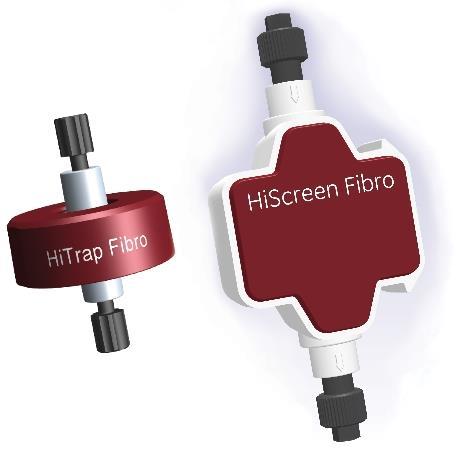Cytiva’s Fibro technology, known for its increased throughput and productivity in monoclonal antibody purification, is being extended to capture adeno-associated virus (AAV).
In 2020, Cytiva introduced Fibro PrismA chromatography for rapid-cycling monoclonal antibody (mAb) purification. The benefit of Fibro in mAb purification is the opportunity to run quick chromatography cycles. The fiber matrix has an open pore structure which allows for very short residence times. The first products released – HiTrap Fibro PrismA and HiScreen Fibro PrismA units – enabled researchers and process developers to purify mAbs with significantly improved throughput compared to resins.
Extended uses
Recent years have seen a dramatically increased interest in advanced therapy medicinal products (ATMP) to address unmet medical needs and deliver more targeted personalized medicines, based on modalities including viral vectors, plasmids, exosomes and mRNA.
“The Fibro technology, with its large pore size and rapid purification cycles, is well suited for these large, diverse modalities”, says David Westman, BioProcess Marketing Manager at Cytiva.
“We are aiming to release a research/process development Fibro AAV affinity unit in late 2021”
Fibro chromatography is now being implemented in processing of AAV where it has dual benefits: the opportunity to run chromatography at residence times of down to a few seconds, complemented with significantly higher binding capacities compared to resins.
“AAV are significantly larger than mAbs and often harvested in relatively low titers”, says Westman, “which often makes it very time-consuming and challenging to purify them with traditional resin-based chromatography. The combination of high capacity and opportunity for high flow is optimal in the processing of AAV. The two features are synergistic and desired.”

New opportunities
With the Fibro technology, process times for the AAV capture step are expected to be reduced from up to 20 hours down to 1-2 hours, depending on harvest titer. This fast purification and concentration of feed also enables a streamlined overall process, eliminating the need to concentrate clarified AAV samples. The Tangential Flow Filtration (TFF) step preceding AAV capture can therefore be omitted. This results in additional opportunities for improved overall recovery.
“We are aiming to release a research/process development Fibro AAV affinity unit in late 2021”, says Westman, “with larger GMP-compatible units in 2022. We think this is very exciting news for the AAV industry: we are developing a scalable dedicated single-use solution that enables increased throughput, capacity and recovery.”














